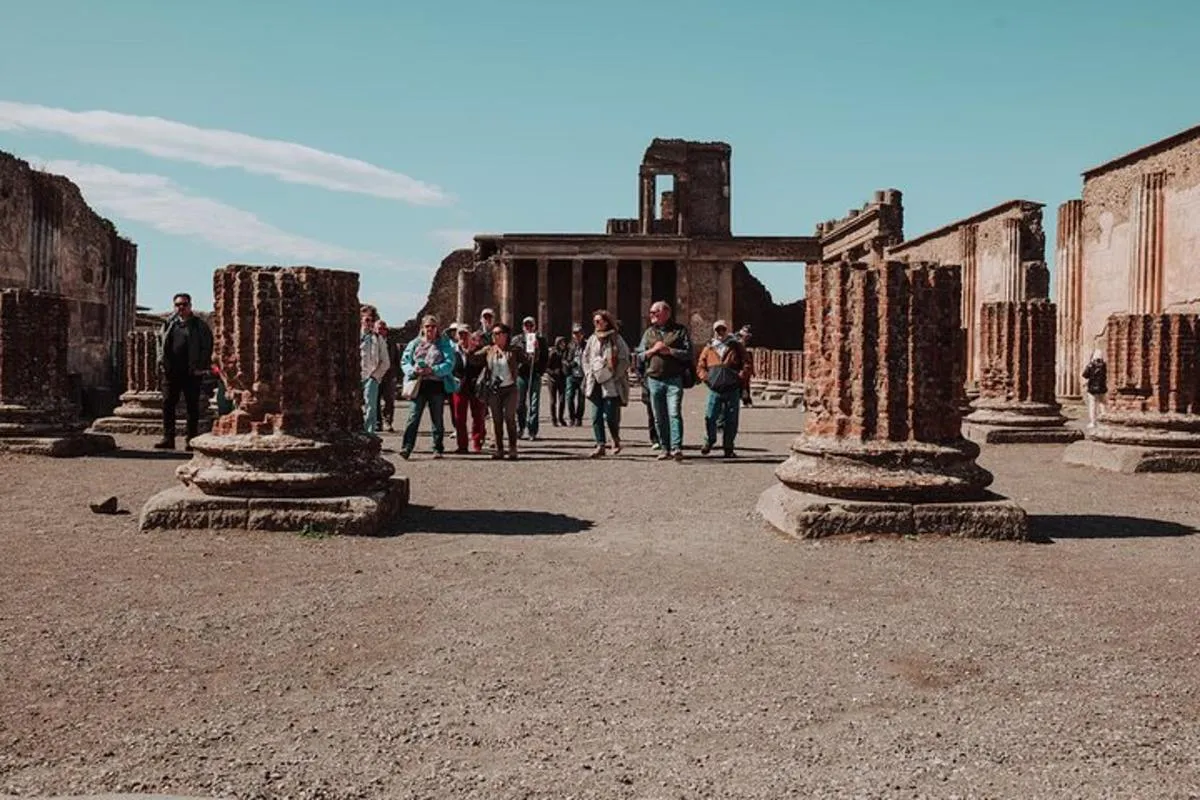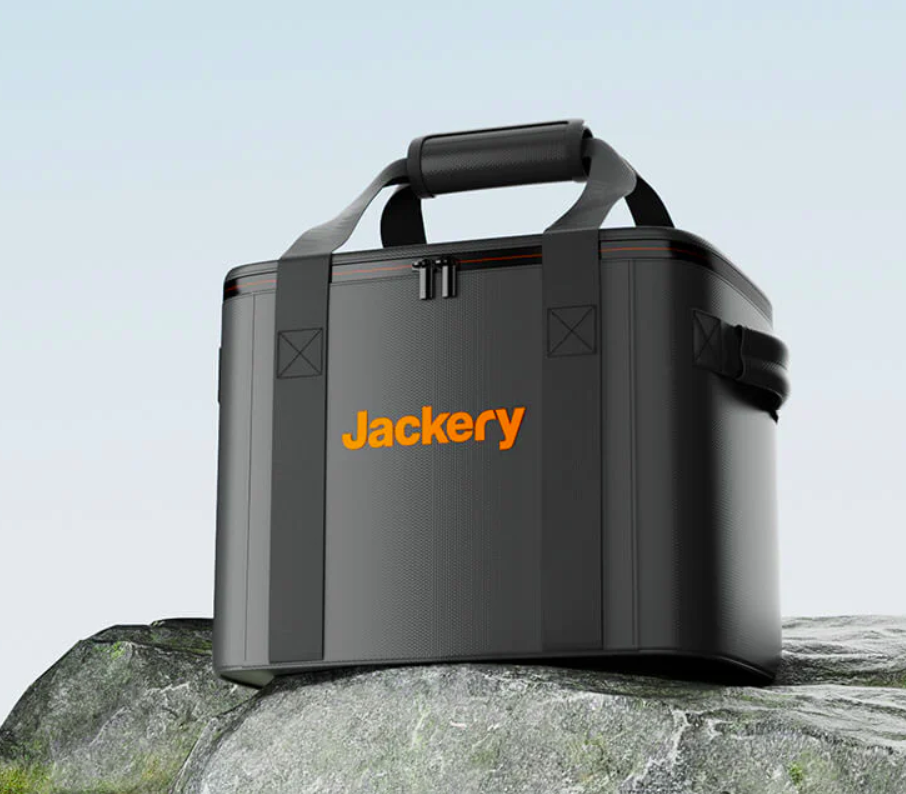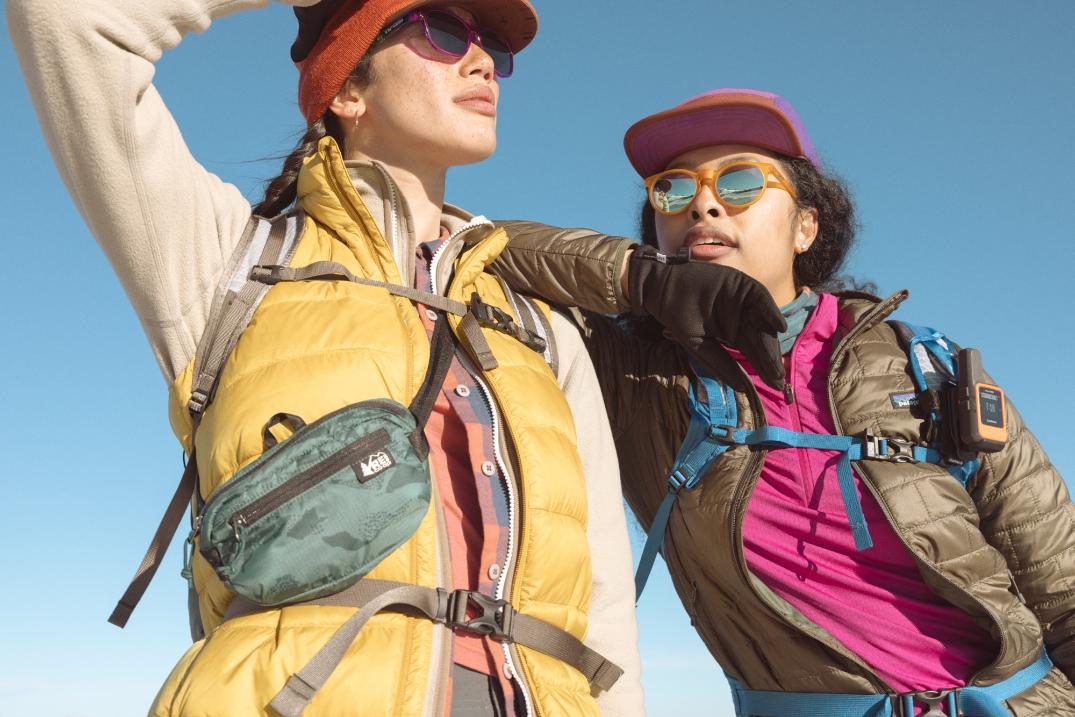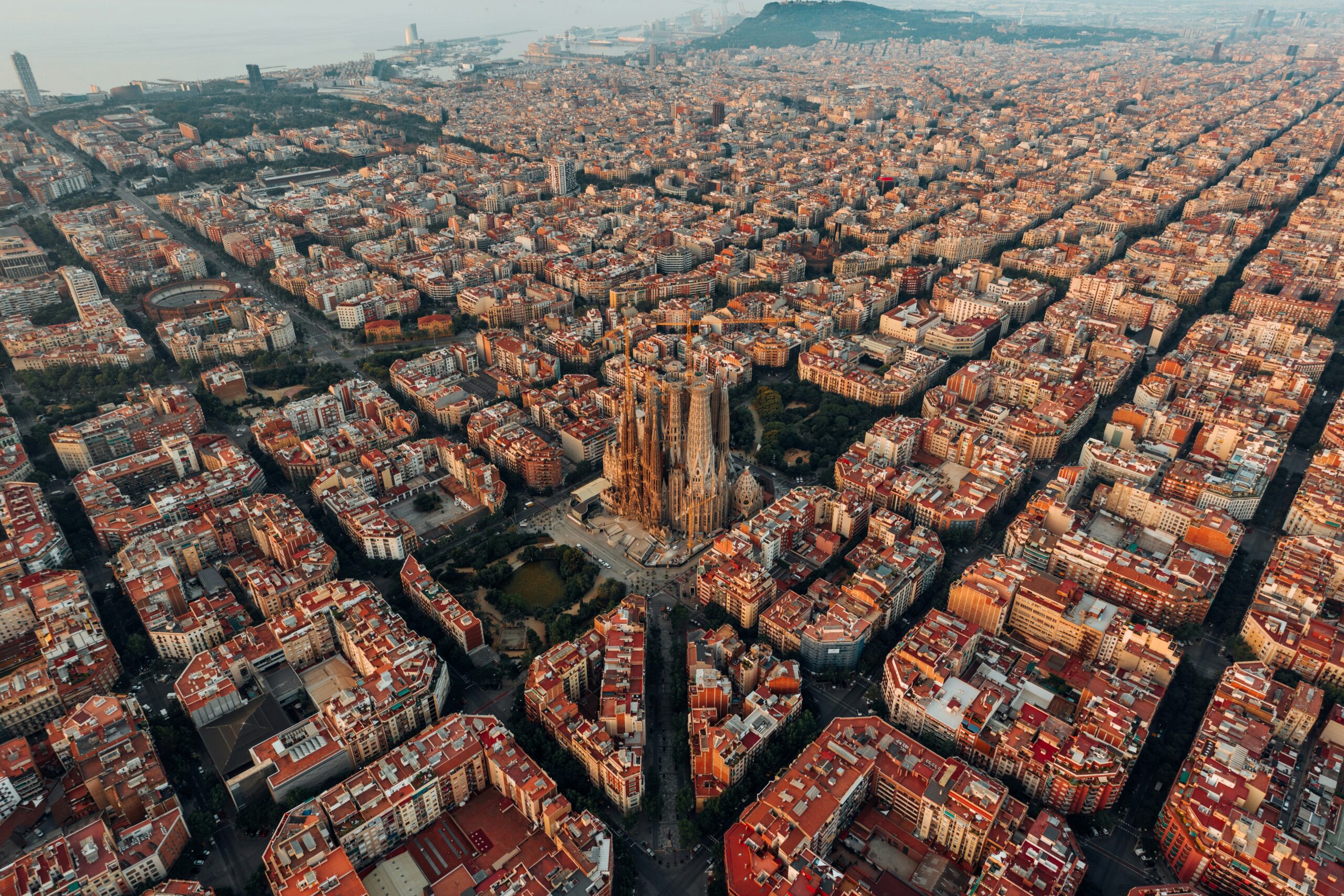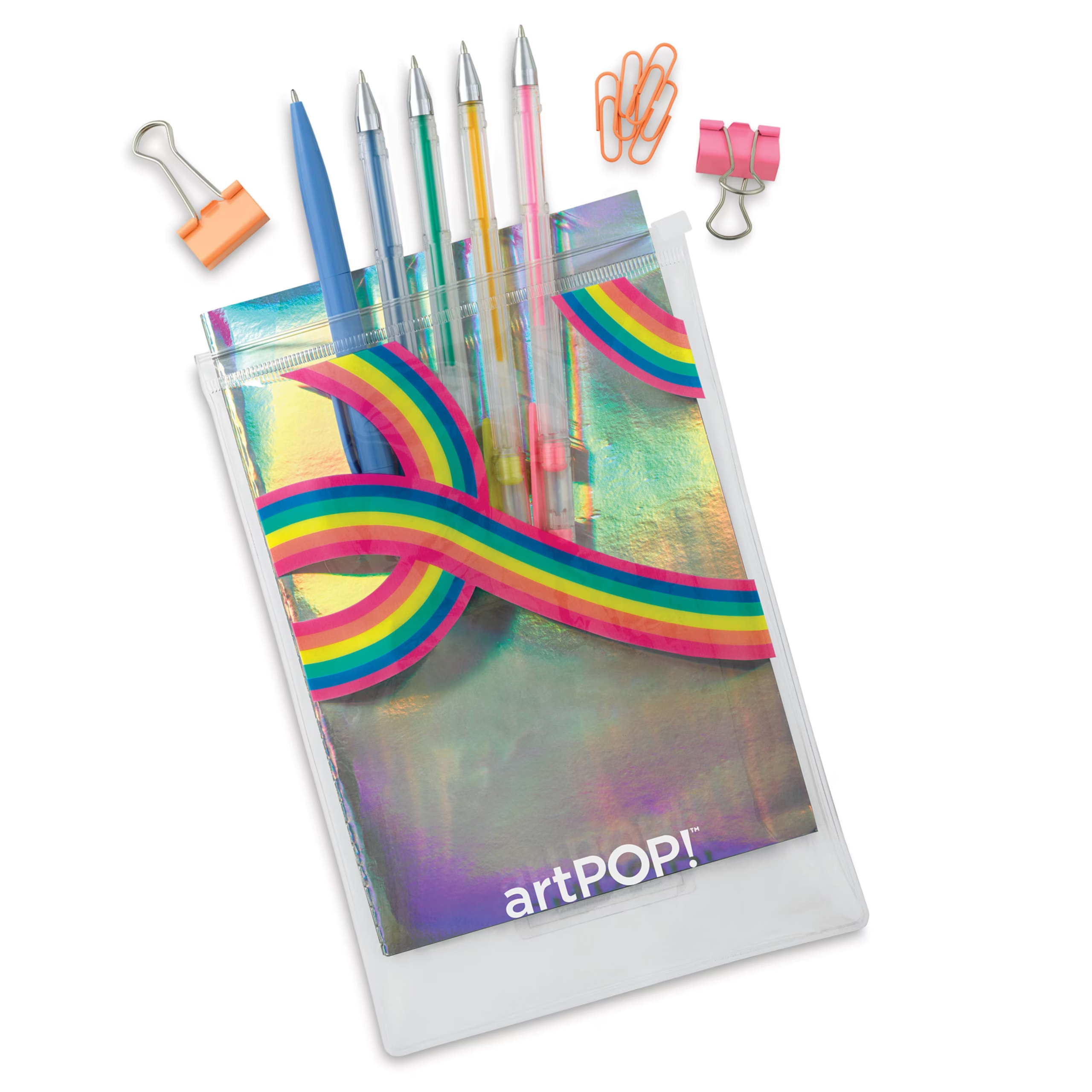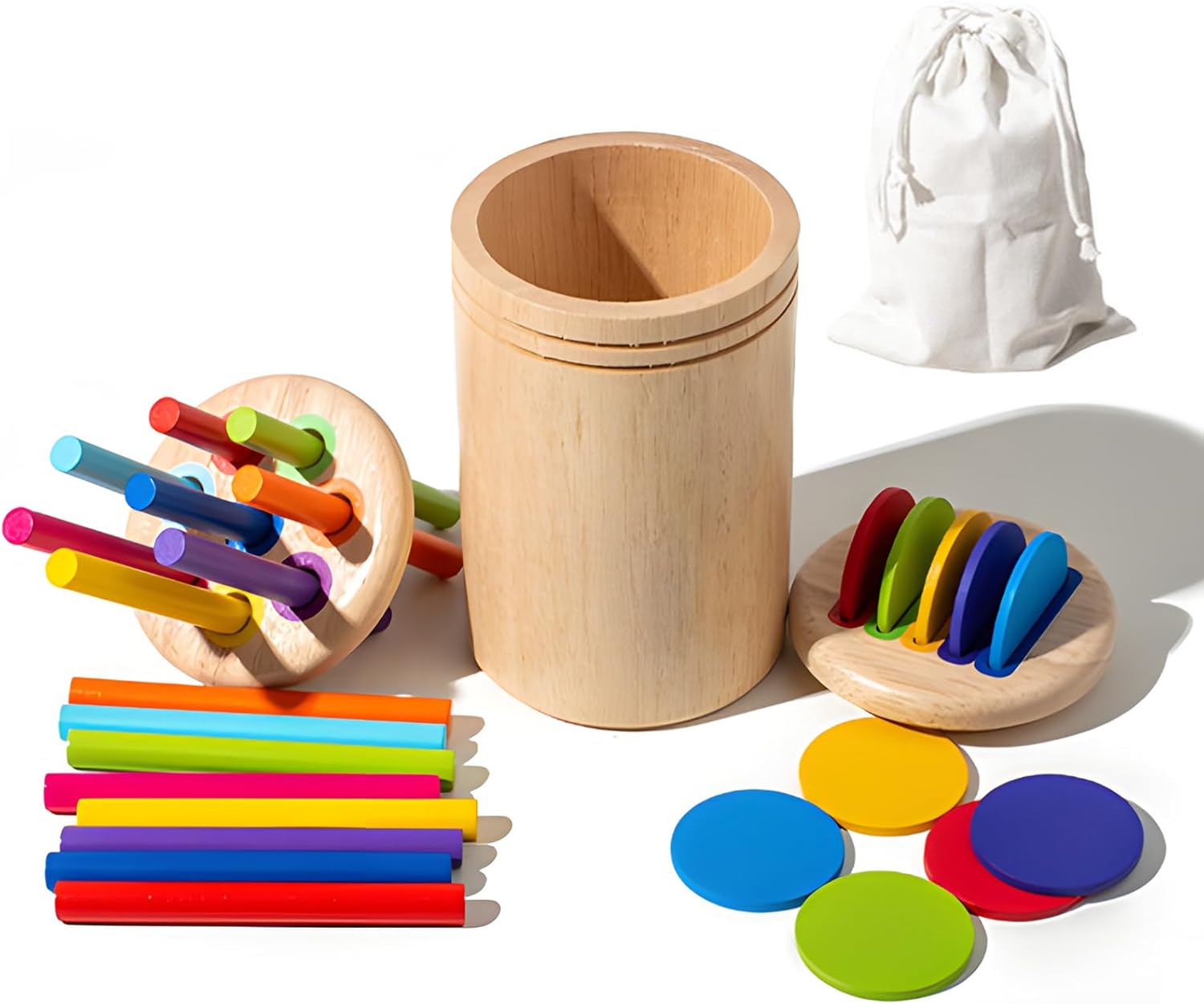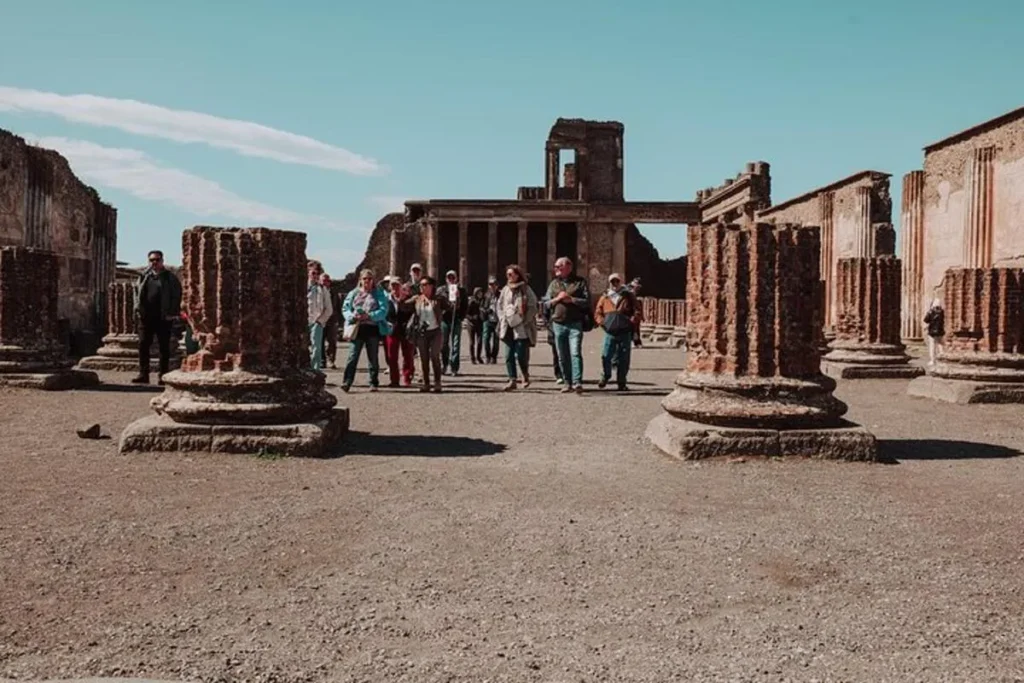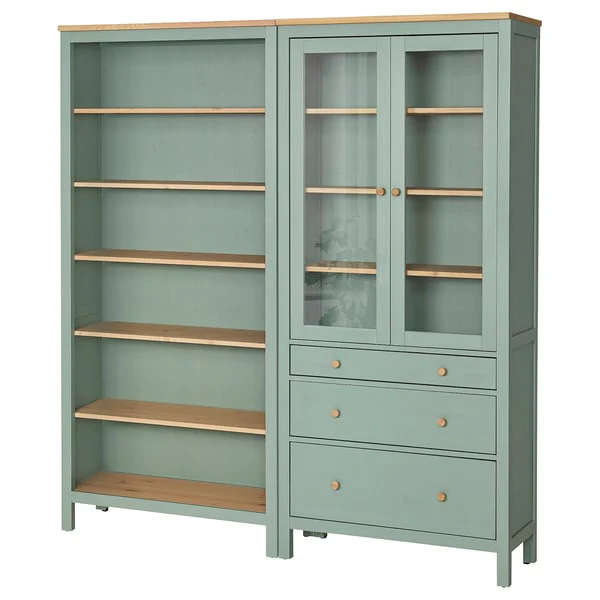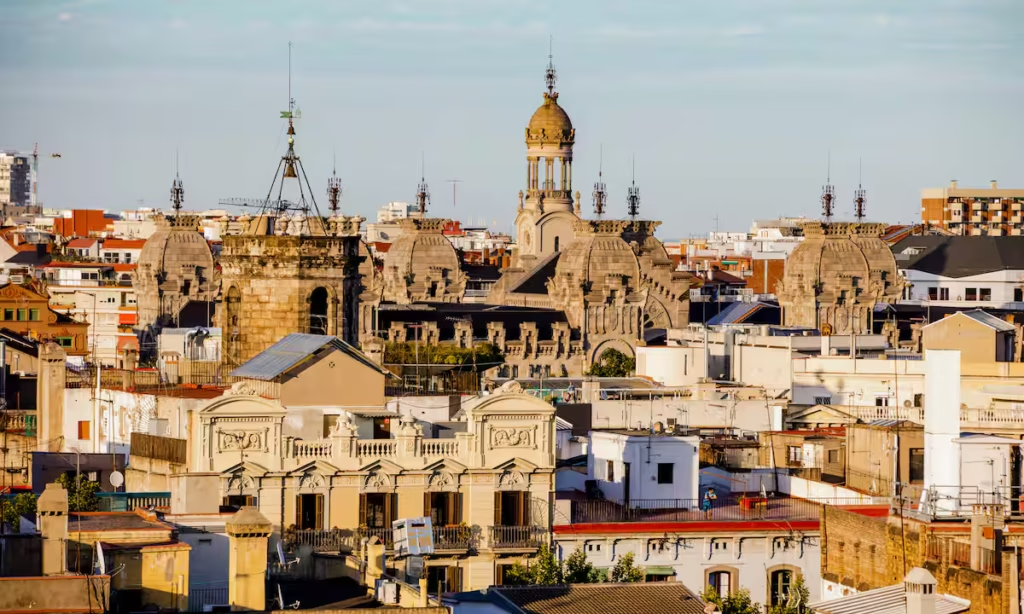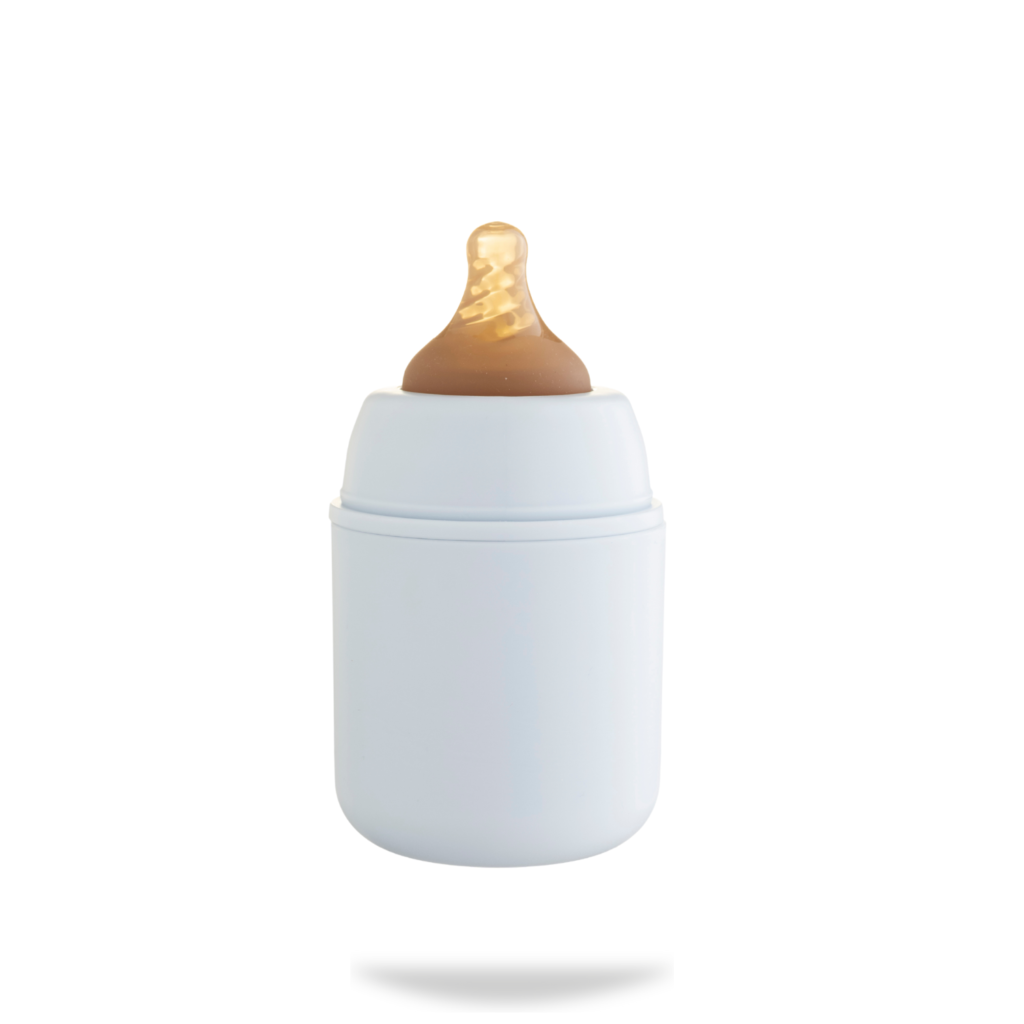Ruins are quiet until someone teaches you how to listen. With an archaeologist at your side, Pompeii stops being a scatter of stones and becomes a lived-in city—painted walls, bread ovens still warm in the imagination, ruts cut by cart wheels you can place your feet into, and the shadow of Vesuvius pressing against every street. In this article, we’ll help you wring every ounce of meaning (and ease) from a Pompeii Tour with Archaeologist: how to plan the day, what to notice that others miss, the most efficient route for first-timers, and the small etiquettes that keep an ancient place feeling alive. Ready to step into a story paused in A.D. 79?
Book Pompeii Tour with Archaeologist.
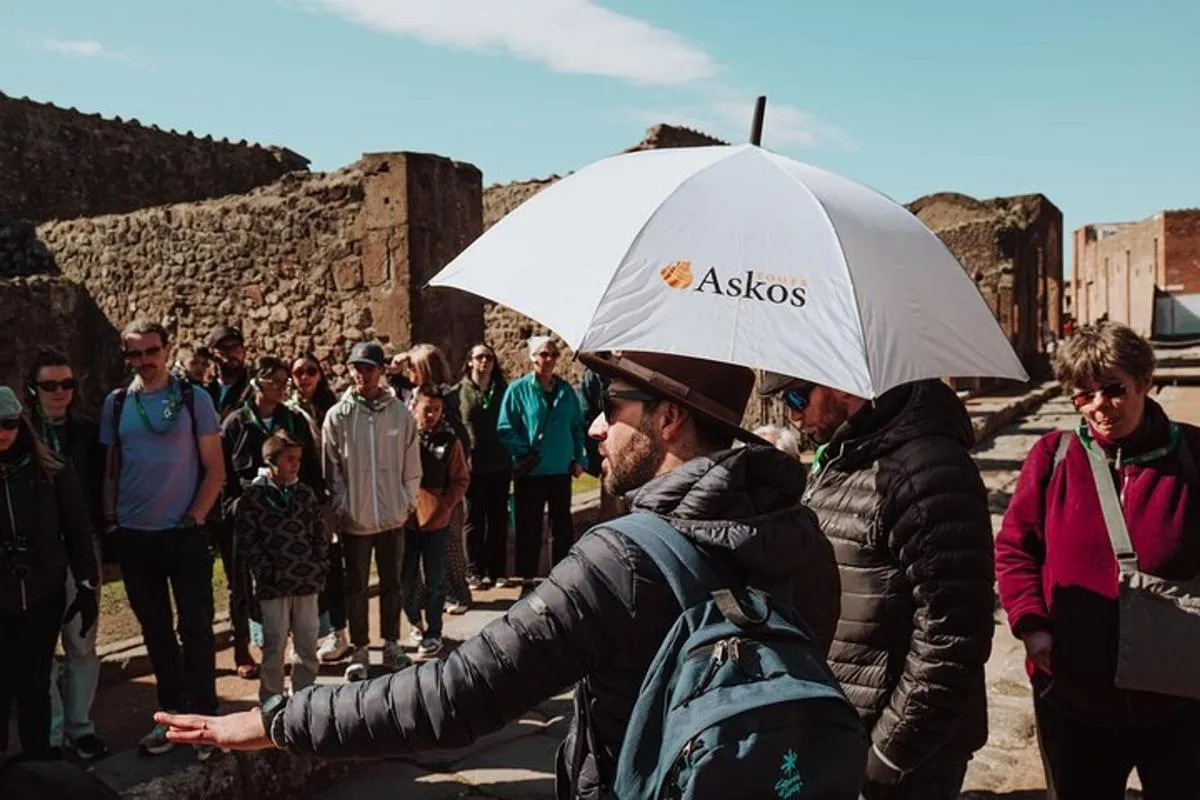
Why an Archaeologist Changes Everything
A typical tour gives you dates and names; an archaeologist gives you process and probability. You’ll hear how walls are read like layered texts, why one fresco fades and another still blazes, and which “facts” are best understood as current best-guess theories. Expect practical magic: a trowel’s-eye view of rubbish pits as data sets, pigments as trade routes, and garden soils as time capsules. The city becomes a research lab in open air—and your guide, a translator between the ground and your curiosity.
When to Go (and How to Pace It)
- Early morning is gold: cooler air, softer light on fresco pigments, quieter lanes for clean photos.
- Shoulder seasons (spring, late autumn) mean less heat and crowd pressure; winter adds mood and empty streets.
- Two to three hours with an archaeologist is the sweet spot for a first pass; add a self-guided hour after to revisit your favorite corners.
Wear breathable layers, a hat, and grippy shoes—Pompeii’s basalt blocks and worn marble can be slick. Bring a refillable bottle; there are working fountains inside the site.
The “Sense-Maker” Route (A First-Timer’s Loop)
Your archaeologist may tune the path for openings and crowd flow, but a high-meaning circuit often runs like this:
- Porta Marina & Forum: Your orientation to civic life—temples, municipal buildings, the legal and commercial heart. Learn how the Forum organized public ritual and business, and where political messaging lived on walls.
- Basilica & Macellum (market): Courts and commerce. Note the marble counters, drainage logic, and how market layout tells you about diet and distribution.
- Streets & Stepping Stones: Walk the grooves. The spacing is a Roman “zebra crossing”; wheel ruts double as traffic archaeology.
- Thermopolium (street-food bar): Dolia (storage jars) still set into counters. Your guide can decode residues and charcoal that tell us what people grabbed for lunch.
- Theatres (Large & Odeon): Two scales of performance; acoustics still snap. Ask about seating hierarchies and electioneering graffiti nearby.
- House of the Faun / House of the Vettii (when open): Mansions as social mirrors—atrium, peristyle gardens, myth panels as status signals.
- Brothel (Lupanar) & Street Art: Not for titillation but for urban sociology: wayfinding frescoes, tariffs, and a map of morality vs. economy.
- Baths (Stabian or Forum Baths): Engineering purrs here—hypocaust heating, water management, and social choreography of hot–warm–cold rooms.
- Amphitheatre & Palaestra (if time): Spectacle, sport, and the famous riot story that reads like a tabloid from antiquity.
- Garden of the Fugitives: Casts in situ; a solemn end that ties geology to human time.
This loop keeps your narrative coherent—civic → commercial → domestic → leisure → mortality—so the city clicks into place.
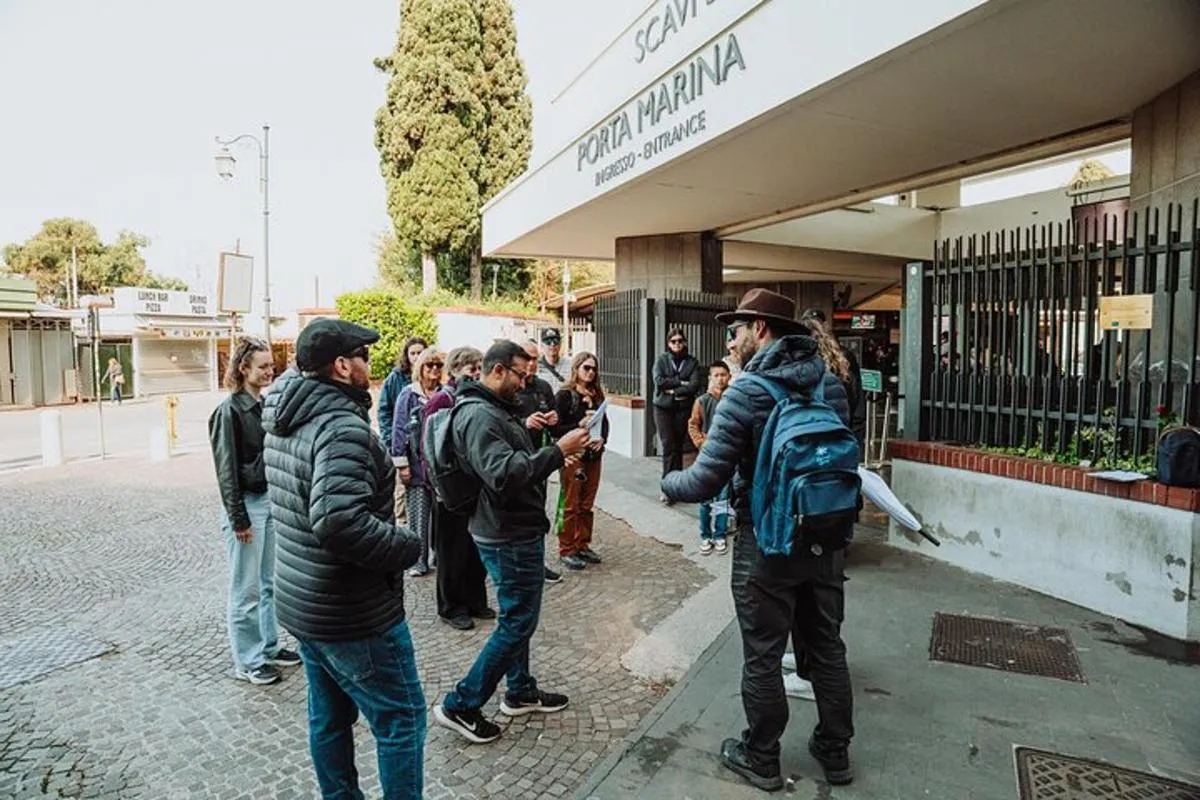
What to Notice That Most Visitors Miss
- Door thresholds: Wear marks reveal foot traffic patterns and class—grand thresholds vs. modest shop sills.
- Wall lines: A straight line of brick change? That’s phasing—renovation or earthquake repair.
- Pigment palette: Egyptian blue, cinnabar red—trade networks on plaster. Ask your archaeologist where natural vs. synthetic pigments appear.
- Graffiti grammar: Scratches talk politics, love, debts, and insults; they’re Twitter in pumice.
- Water logic: Lead pipes, street castellum, fountains—follow the flow to understand wealth and municipal planning.
- Garden reconstructions: Pollen, root cavities, and soil chemistry rebuild ancient courtyards—aromas were part of décor.
Photography Without Ruining Your Own Memory
- Shoot the story, not just the stones: One wide anchor per stop, one texture (mosaic tesserae, fresco brushwork), one human element (your partner’s hand tracing a rut, your guide’s trowel pointing at a hinge).
- Control exposure: Tap the brightest plaster to avoid blowouts; let shadows hold mystery.
- Pocket the phone: Give every major space 30 seconds with no screen. Your brain stores smells, air, and scale better than a camera.
Respecting a City of the Dead (and the Living)
Pompeii is both outdoor museum and grave site. Don’t climb walls or sit on thresholds; stay behind ropes—stability matters. Keep your voice softened in the Garden of the Fugitives and at casts. Ask before photographing people, and never touch frescoes or mosaics (oils from fingers = slow damage).
Book Pompeii Tour with Archaeologist.
Pairing Pompeii With the Rest of Your Day
Option A — Naples Culture Sprint
- Morning Pompeii Tour with Archaeologist
- Lunch near the site (simple pasta or pizza—you’re in Campania)
- Afternoon at the National Archaeological Museum of Naples to see mosaics and artifacts lifted from Pompeii; your mental map will light up.
Option B — Coast & Calm
- Morning tour
- Train or drive to Sorrento for a lemon granita, an easy cliff walk, and a sunset over the bay.
- Sleep by the sea, brain pleasantly full.
Option C — Volcano Context
- Morning tour
- Afternoon Vesuvius crater hike for the geologic exclamation point.
Comfort, Logistics, and Little Wins
- Tickets & timing: Prebook entry + guided tour window; arrive 15–20 minutes early to sync with your group and use facilities.
- Sun & stone: The site is exposed. Sunscreen, sunglasses, and a light scarf/hat are essentials year-round.
- Footing: Step on the stepping stones at crossings when streets are uneven or wet.
- Audio: If your tour offers headsets, use them—you’ll catch every aside, which is where the gold often is.
- Breaks: Build a five-minute shade stop each hour; your attention lasts longer when your body isn’t fighting heat.
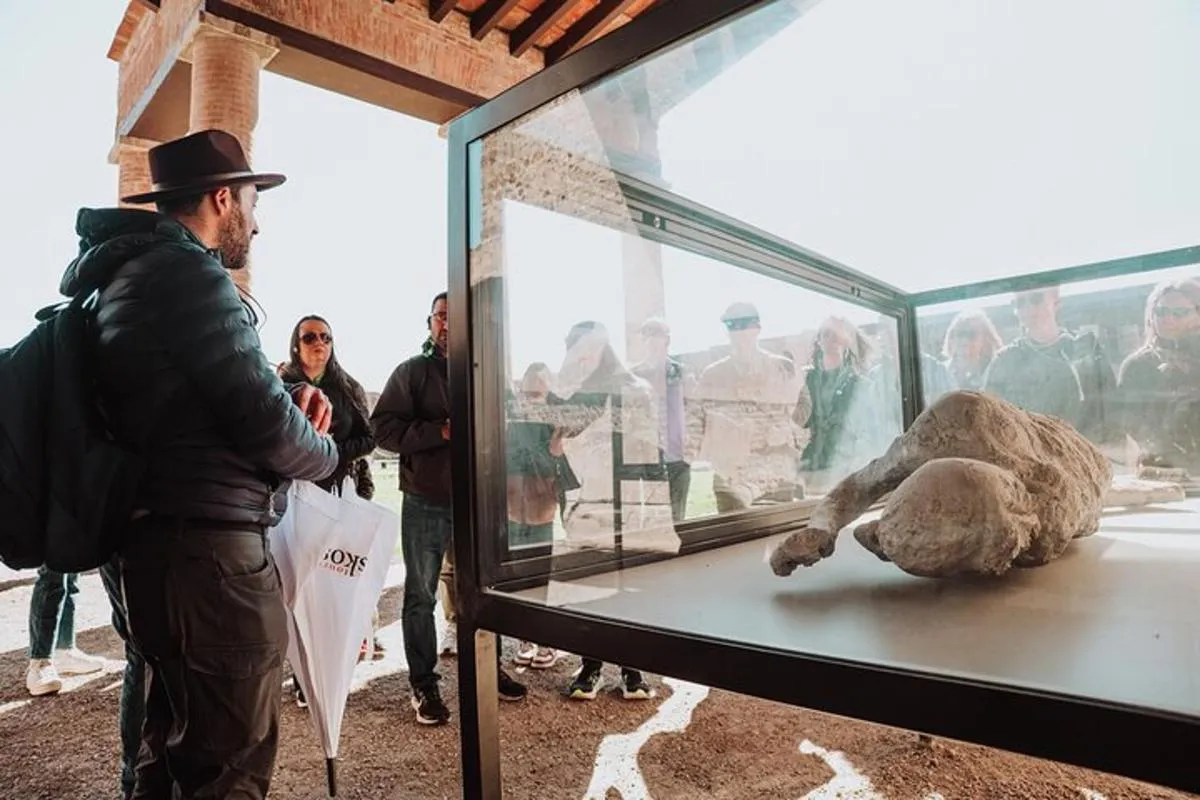
Eat Like a Sensible Roman (Before/After)
- Before: yogurt/fruit and a coffee. Heavy breakfasts + summer heat = low joy.
- After: pizza a ruota di carro in Naples; seafood and frittura in Sorrento; sfogliatella as your sweet victory lap. Hydrate like you’re on campaign.
For Kids and Multi-Generational Groups
- Give children a treasure list: a mosaic animal, a fresco fruit, three Latin letters, a rutted crossing, one amphora.
- Use the baths as a hands-on science lesson—steam, heat, water flow.
- Pace mobility needs with bench stops at theatres and along the Forum porticoes.
Sustainability, Light Touch
Go digital with tickets, refill your bottle, stay on paths to protect fragile layers, and support local eateries near the site rather than chain cafés. Knowledge-rich tourism sustains conservation—your archaeologist’s work is funded by interest like yours.
Common Pitfalls (and Easy Fixes)
- Trying to “see it all.” You can’t, not in a day. See one city well; Herculaneum is a perfect second site on another day.
- Midday meltdown. In warm months, aim for a morning tour; save indoor museums for the heat of the afternoon.
- Winging the route. Let your archaeologist lead; they’ll read crowds and closures in real time.
- Over-photoing casts. Take a respectful frame, then step back. The moment is better felt than captured.
Make It Memorable: Tiny Rituals
- Place your foot in a cart rut for one breath and imagine the sound of iron on stone.
- Read one graffiti line aloud (softly). Ancient jokes and boasts land better in air than on a placard.
- Choose one fresco fruit or myth and find it again on a museum mosaic later that day—your own thread through time.
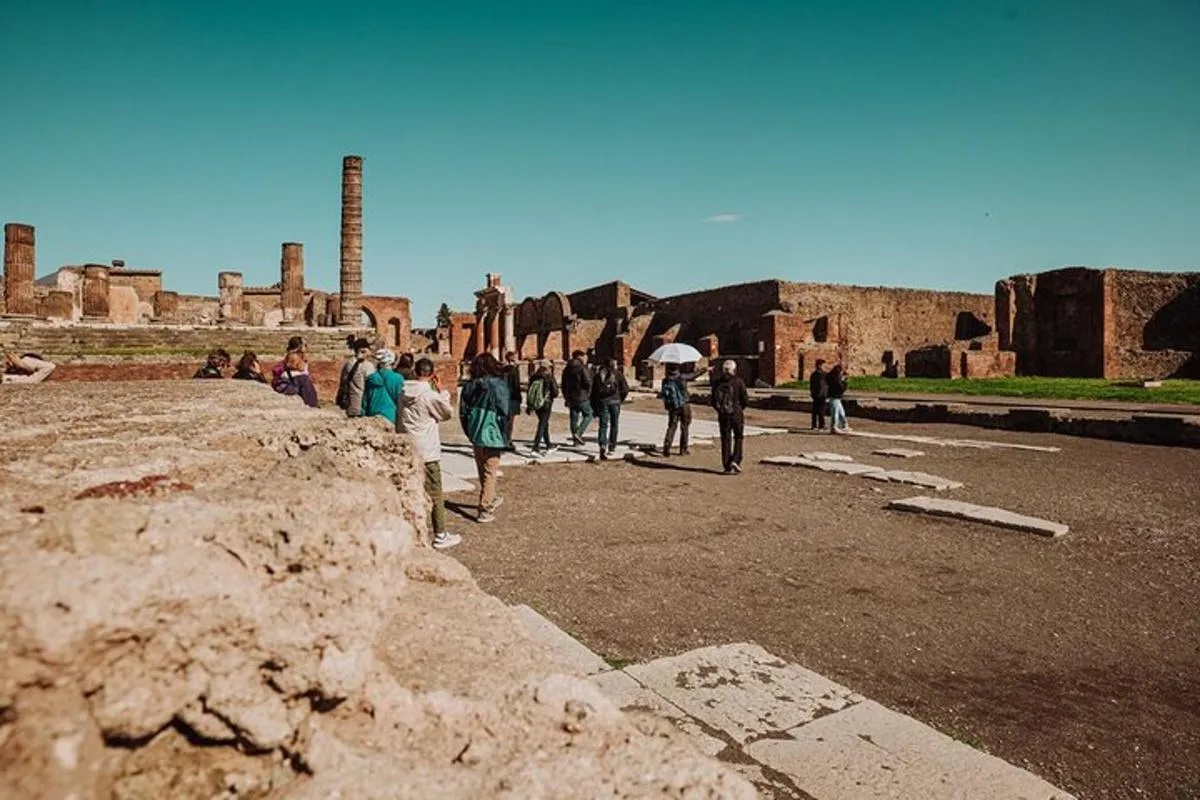
Conclusion
Pompeii is not just a checklist; it’s a conversation with the ground. With an archaeologist leading the way, those streets become comprehensible, the houses reacquire their voices, and the whole city exhales a story that’s as much about us as it is about Romans. Go early, walk lightly, listen closely, and let method—how we know what we know—be part of the pleasure. You’ll leave with more than photos: a city that fits in your head and a timeline you can feel under your feet.
Book Pompeii Tour with Archaeologist.
FAQ
- How long is a typical Pompeii Tour with Archaeologist?
About 2–3 hours for the guided core, with time to explore solo afterward if you like. - Is it suitable for kids?
Yes—especially with a treasure list and breaks. Archaeologists are great at turning stones into stories. - Do I need advanced tickets?
Strongly recommended in peak seasons. Prebooking locks your entry window and guide slot. - Which houses are must-sees?
Varies by openings, but the House of the Faun and House of the Vettii (when accessible) are classics; your archaeologist will adapt in real time. - What should I wear?
Breathable clothes, hat, sunscreen, supportive shoes with grip. Bring a light layer in cooler months. - Is the site accessible?
Some routes are uneven; there are accessibility paths and ramps in sections. Flag mobility needs at booking. - Can I photograph everything?
Yes, for personal use—without flash near delicate frescoes. Be respectful around casts and other visitors. - How hot does it get?
Very, in summer. Aim for morning, hydrate often, and use shade breaks. Winter/shoulder seasons are glorious. - What about restrooms and water?
Facilities exist at entrances and some interior zones; fountains provide potable water—carry a bottle. - Should I combine Pompeii with something else the same day?
Perfect pairings: Naples Archaeological Museum (artifacts), Vesuvius (geology), or an easy Sorrentine coastal afternoon for recovery.

